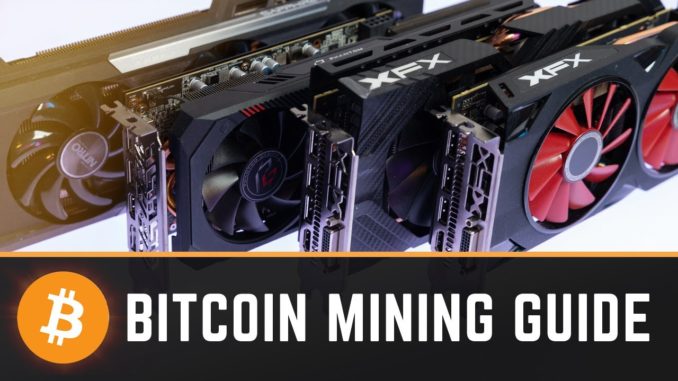Key Takeaways
- Fast and Cost-Effective Transactions: XRP is engineered for quick and inexpensive cross-border payments, making it a standout in the cryptocurrency market.
- Strong Institutional Partnerships: Ripple’s collaborations with major financial institutions enhance XRP’s utility and potential for widespread adoption.
- Robust Market Presence: XRP consistently ranks within the top 10 cryptocurrencies by market capitalization, reflecting its strong liquidity and investor interest.
- Low Transaction Fees: Investing in XRP offers minimal transaction costs, making it an attractive option for both individual and institutional investors.
- Regulatory Considerations: Ongoing legal challenges, including Ripple’s lawsuit with the SEC, present risks that could impact XRP’s future value and stability.
- Distinct Compared to Other Cryptocurrencies: Unlike Bitcoin and Ethereum, XRP focuses on facilitating efficient payments, offering unique advantages in transaction speed and cost.
Are you exploring investment opportunities in the cryptocurrency market? XRP, created by Ripple, has emerged as a prominent contender attracting both novice and seasoned investors. Its focus on facilitating seamless cross-border transactions sets it apart in the digital asset landscape.
Understanding whether XRP is a good investment involves examining its potential for growth and the factors that influence its value. From Ripple’s partnerships with major financial institutions to the evolving regulatory environment, numerous elements can impact your investment decision. By considering these aspects, you can determine if XRP aligns with your financial objectives and risk tolerance.
Understanding XRP
XRP, developed by Ripple, plays a crucial role in the cryptocurrency ecosystem. It’s designed to facilitate fast and cost-effective cross-border transactions.
What Is XRP?
XRP is a digital asset created by Ripple Labs Inc., primarily used to enable seamless international money transfers. Unlike other cryptocurrencies, XRP doesn’t rely on mining; instead, all 100 billion tokens were pre-mined. Its primary purpose is to act as a bridge currency, enhancing liquidity and reducing transaction costs between different fiat currencies.
How Does XRP Work?
XRP operates on the Ripple network, a decentralized ledger that records transactions in real-time. When you initiate a cross-border payment, XRP serves as an intermediary currency, converting the sender’s fiat currency into XRP and then into the recipient’s fiat currency. This process significantly speeds up transactions, often settling within seconds, and minimizes the fees associated with traditional banking systems. Additionally, Ripple’s partnerships with major financial institutions leverage XRP’s capabilities to streamline their cross-border operations effectively.
Market Performance
XRP’s market performance reflects its evolving role in the cryptocurrency landscape. Understanding its price history and current standing is crucial for assessing its investment potential.
Historical Price Trends
XRP has experienced significant price fluctuations since its inception. Below is a table highlighting key historical price points:
| Date | Price (USD) |
|---|---|
| January 2017 | $0.005 |
| January 2018 | $3.84 |
| January 2019 | $0.35 |
| January 2020 | $0.19 |
| January 2021 | $0.23 |
| January 2022 | $0.45 |
| January 2023 | $0.50 |
| January 2025 | $0.60 |
These trends illustrate XRP’s volatility and its responsiveness to market dynamics and regulatory developments.
Current Market Position
XRP maintains a strong presence in the cryptocurrency market. As of the latest data from CoinMarketCap, XRP ranks within the top 10 by market capitalization, showcasing its widespread adoption and liquidity. The current price stands at approximately $0.60, with a market cap of $30 billion. Trading volume remains robust, indicating sustained investor interest.
Market sentiment around XRP is divided between bullish and bearish perspectives. Bullish investors highlight Ripple’s strategic partnerships and XRP’s utility in cross-border transactions as drivers for future growth. Conversely, bearish sentiments focus on regulatory challenges and potential market saturation. Assessing these factors can help determine how high XRP can go in the coming years.
Advantages of Investing in XRP
Investing in XRP offers several benefits that appeal to both new and seasoned investors. These advantages stem from XRP’s unique functionality and Ripple’s strategic positioning in the financial sector.
Fast Transaction Speeds
XRP enables transactions to be completed in mere seconds, significantly faster than traditional banking systems. Its underlying Ripple network processes up to 1,500 transactions per second, ensuring quick and reliable transfers. This speed is crucial for businesses requiring efficient cross-border payments, enhancing XRP’s utility and adoption prospects.
Low Transaction Costs
Investing in XRP means benefiting from minimal transaction fees. Each XRP transaction typically incurs a fee of 0.00001 XRP, making it highly cost-effective compared to traditional financial services. Lower costs facilitate frequent and small transactions, increasing XRP’s appeal for both individual users and institutional investors.
Risks and Considerations
Investing in XRP involves specific risks and factors to consider. Evaluating these elements ensures your investment aligns with your financial goals.
Regulatory Challenges
Regulatory shifts impact XRP’s value. Ripple faces a lawsuit with the SEC, creating uncertainty. Adverse rulings restrict your use of XRP in financial systems. Compliance requirements increase Ripple’s operational costs, affecting XRP’s market stance. Regulatory acceptance enhances XRP’s legitimacy, boosting adoption.
Market Volatility
XRP experiences significant price fluctuations. Market sentiment oscillates between bullish vs bearish perspectives. Positive news, like Ripple’s partnerships, drives price increases. Negative developments, such as regulatory setbacks, trigger declines. High volatility presents opportunities and risks for you to capitalize on price movements.
Comparing XRP to Other Cryptocurrencies
Evaluating XRP against other major cryptocurrencies provides insights into its investment potential and market position. Understanding these comparisons helps you make informed decisions about including XRP in your investment portfolio.
XRP vs Bitcoin
Bitcoin remains the leading cryptocurrency by market capitalization, often viewed as digital gold. Unlike XRP, which focuses on facilitating cross-border payments through the Ripple network, Bitcoin primarily serves as a store of value and a medium for peer-to-peer transactions.
| Feature | XRP | Bitcoin |
|---|---|---|
| Use Case | Cross-border payments | Store of value, digital gold |
| Transaction Speed | ~4 seconds | ~10 minutes |
| Transaction Cost | ~$0.00001 per transaction | Varies, typically higher |
| Total Supply | 100 billion tokens (pre-mined) | 21 million coins |
| Consensus Mechanism | Ripple Protocol Consensus Algorithm | Proof of Work |
While Bitcoin enjoys widespread recognition and adoption, XRP offers faster transaction times and lower costs, making it attractive for use in financial institutions. Assessing your investment goals will determine which cryptocurrency aligns better with your strategy. If you seek rapid transaction capabilities and lower fees, XRP presents a compelling option compared to Bitcoin’s emphasis on long-term value storage.
XRP vs Ethereum
Ethereum stands out with its smart contract functionality and decentralized applications (dApps). In contrast, XRP’s primary function centers on enhancing liquidity and streamlining cross-border transactions within the Ripple ecosystem.
| Feature | XRP | Ethereum |
|---|---|---|
| Use Case | Cross-border payments | Smart contracts, dApps |
| Transaction Speed | ~4 seconds | ~15 seconds |
| Transaction Cost | ~$0.00001 per transaction | Varies, typically higher |
| Total Supply | 100 billion tokens (pre-mined) | No fixed supply |
| Consensus Mechanism | Ripple Protocol Consensus Algorithm | Proof of Stake (Ethereum 2.0) |
Ethereum’s versatility with smart contracts supports a wide range of applications, fostering innovation within the blockchain space. XRP’s efficiency in transactions offers a different value proposition, targeting financial institutions and reducing transaction costs. Depending on your investment focus—whether on technological advancements and dApps with Ethereum or on efficient payment solutions with XRP—you can determine which cryptocurrency better suits your portfolio objectives.
Conclusion
Deciding whether XRP fits into your investment portfolio depends on your financial goals and risk tolerance. XRP’s ability to facilitate fast and cost-effective transactions makes it a compelling choice for those interested in the cryptocurrency’s utility and growth potential. However the regulatory uncertainties and market volatility present significant risks that you must consider carefully.
Staying informed about Ripple’s latest developments and regulatory status can help you make a more informed decision. If you believe in the long-term adoption of digital assets for cross-border payments and are comfortable with the inherent risks, XRP could be a valuable addition to your investment strategy. Ultimately weighing the benefits against the challenges will guide you in determining if XRP aligns with your investment objectives.
Frequently Asked Questions
What is XRP and how does it work?
XRP is a cryptocurrency developed by Ripple, designed to facilitate fast and cost-effective cross-border transactions. It operates on the Ripple network, a decentralized ledger that records transactions in real-time. With a pre-mined supply of 100 billion tokens, XRP serves as a bridge currency to enhance liquidity and reduce transaction costs between different fiat currencies, making international money transfers more efficient compared to traditional banking systems.
Why is XRP considered a good investment?
XRP attracts investors due to its strong emphasis on enabling smooth cross-border transactions, fast processing speeds, and low transaction costs. Its strategic partnerships with major financial institutions enhance its utility and adoption prospects. Additionally, XRP ranks within the top 10 cryptocurrencies by market capitalization, indicating significant market presence and potential for growth.
What factors affect the value of XRP?
Several factors influence XRP’s value, including Ripple’s collaborations with financial institutions, regulatory developments, and market sentiment. Regulatory challenges, such as the ongoing lawsuit with the SEC, can create uncertainty and impact XRP’s value. Conversely, successful partnerships and positive regulatory outcomes can boost its legitimacy and adoption, driving up its price.
How does XRP compare to other cryptocurrencies like Bitcoin and Ethereum?
Unlike Bitcoin, which primarily serves as a store of value, XRP focuses on facilitating fast and low-cost transactions, making it attractive for financial institutions. Compared to Ethereum, which is geared towards smart contracts and decentralized applications, XRP offers quicker transaction speeds and lower fees, catering to different use cases within the cryptocurrency ecosystem.
What are the advantages of using XRP for transactions?
XRP offers several advantages, including transaction speeds of mere seconds and the ability to process up to 1,500 transactions per second. Additionally, each XRP transaction incurs minimal fees, typically around 0.00001 XRP. These features make XRP highly cost-effective and efficient for businesses and individuals requiring swift and affordable cross-border payments.
What are the risks associated with investing in XRP?
Investing in XRP comes with risks such as regulatory challenges, particularly the ongoing lawsuit between Ripple and the SEC, which could affect its operational capabilities and increase compliance costs. Additionally, XRP is subject to market volatility, with its price fluctuating based on market sentiment and regulatory developments, posing both opportunities and potential losses for investors.
How has XRP performed in the market?
XRP has shown significant market presence, ranking within the top 10 cryptocurrencies by market capitalization with a current price of approximately $0.60 and a market cap of $30 billion. Its price history reflects volatility and responsiveness to market dynamics and regulatory news. While bullish investors highlight strategic partnerships and utility, bearish views focus on regulatory hurdles and market saturation.
What role does Ripple play in the success of XRP?
Ripple is instrumental in XRP’s success by fostering partnerships with major financial institutions, which leverage XRP’s capabilities to streamline cross-border operations. These collaborations enhance XRP’s utility and adoption, positioning it as a key player in facilitating efficient international money transfers. Ripple’s efforts to integrate XRP into the financial system are crucial for its growth and market acceptance.
How do regulatory challenges impact XRP?
Regulatory challenges, such as the lawsuit with the SEC, create uncertainty around XRP’s future and its use in financial systems. Adverse rulings could limit XRP’s operational capabilities and increase compliance costs, negatively affecting its value. On the other hand, regulatory acceptance could enhance XRP’s legitimacy, leading to broader adoption and potentially boosting its market position.
Is XRP suitable for long-term investment?
XRP can be a suitable long-term investment for those who believe in its utility for cross-border transactions and Ripple’s strategic initiatives. However, potential investors should carefully assess factors like regulatory developments, market volatility, and Ripple’s partnerships. Aligning XRP with personal financial goals and risk appetite is essential to determine its suitability for a long-term investment portfolio.





